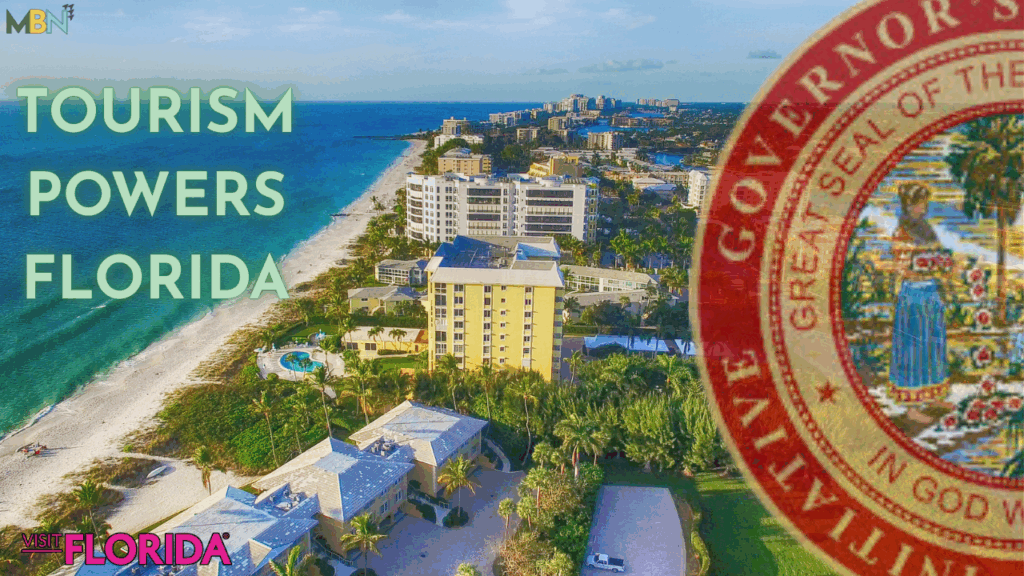
Tourism generated $133.6 billion in economic impact in 2024, supporting 1.8 million jobs and generating $33.6 billion in tax revenue.
Visitor spending reached $134.9 billion, with 99 cents of every dollar staying in Florida’s economy.
Florida households saved nearly $2,000 each thanks to tourism-driven state and local tax revenue.
Florida’s tourism engine delivered a powerful economic surge in 2024, bringing in more than $133.6 billion in statewide economic impact and saving Florida households nearly $2,000 each in annual taxes, according to new data released by VISIT FLORIDA.
The findings come from the 2024 Economic & Fiscal Impact of Tourism in Florida report, produced by Rockport Analytics and released this week. The annual study measures how visitor spending—and the jobs it supports—ripples through Florida’s economy. This year’s report shows tourism once again served as one of the state’s most important economic pillars.
The study confirms that 143 million visitors came to Florida in 2024, setting a new all-time record and continuing a multiyear streak of growth. Out-of-state travelers spent $134.9 billion last year, a 3% increase over 2023.
Domestic tourism made up the lion’s share of those dollars—$120.1 billion—while international travelers contributed $14.8 billion, reflecting ongoing recovery in long-haul travel markets.
One of the most significant findings in the report is how efficiently Florida retains visitor spending. For every $1 spent by a tourist, 99 cents remained in Florida, circulating through local businesses, hospitality operations, supply chains, and state tax systems. That is up from 97 cents in 2023, indicating stronger in-state reinvestment and fewer dollars leaking out through external vendors or corporate headquarters.
Tourism represented 7.8% of Florida’s Nominal Gross State Product (GSP) in 2024—meaning nearly one-twelfth of the state’s entire economy is supported directly or indirectly by visitor activity.
The financial benefits extend beyond hotels and theme parks. Visitor spending flows through restaurants, retail stores, construction companies, transportation firms, entertainment venues, and small businesses on Florida’s coasts and in rural communities across the state.
In total, tourism supported 1.8 million jobs last year, including:
Hotel and lodging workers
Restaurant and service employees
Retail and entertainment workers
Transportation and logistics staff
Professional services supporting hospitality businesses
Together, those jobs accounted for $79.9 billion in wages, a 4.6% increase from 2023. Of that amount, $44 billion came from direct tourism employment, meaning workers who interact with visitors daily.
Tourism also produced $33.6 billion in federal, state, and local taxes in 2024—a 3.3% increase over the previous year. Those tax dollars help fund schools, infrastructure, public safety, emergency management, beaches, parks, and essential government services.
But the headline number for Florida residents:
Without tourism, households would have paid an extra $1,730 per year in state and local taxes to maintain current levels of public funding.
VISIT FLORIDA highlights this figure as proof of the long-term impact tourism has on residents—even those who never directly interact with visitors.
Governor Ron DeSantis said the new economic figures underscore tourism’s role in keeping the state competitive, stable, and economically resilient.
“Our tourism industry is critical to Florida’s strong economic position,” DeSantis said. “Florida remains the top destination for travelers from across the country and the world because we prioritize freedom and safety. Tourism fuels jobs and keeps Florida’s economy strong.”
DeSantis noted that the state’s open-business policies, investment in public safety, and reputation for clean beaches and outdoor recreation continue to draw families, retirees, and international travelers in record numbers.
Bryan Griffin, President and CEO of VISIT FLORIDA, said the new numbers validate the state’s continued investment in tourism marketing and destination promotion.
“Tourism drives Florida’s economy,” Griffin said. “This new data demonstrates the value of Florida’s investment in tourism—and the tax revenues generated by visitors. Florida’s 9.1 million households are saving nearly $2,000 a year because of the revenue tourism brings in.”
He emphasized that VISIT FLORIDA’s mission is to maximize ROI for residents by drawing high-value visitors, extending stays, and promoting regions of the state beyond traditional tourism hotspots.
Industry analysts say Florida remains one of the most visible and in-demand destinations in the world, and early data suggests the state is on track for another strong year in 2025.
With infrastructure investments, expanded hotel inventory, and new travel demand from international markets, Florida officials expect continued growth across major visitor regions from the Panhandle to the Keys.
Register or login with Mid Bay News and never get another pop up on our site!